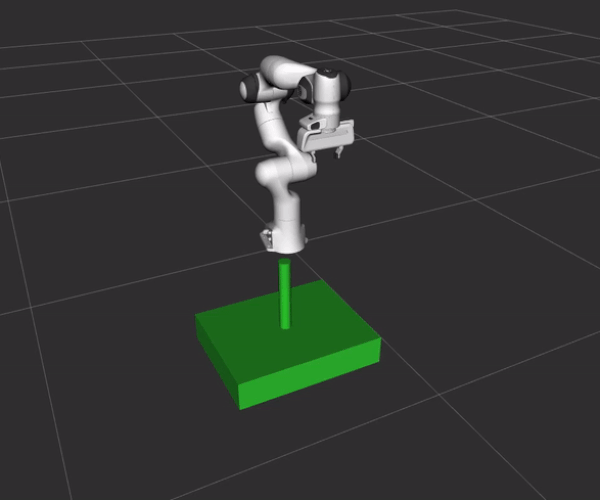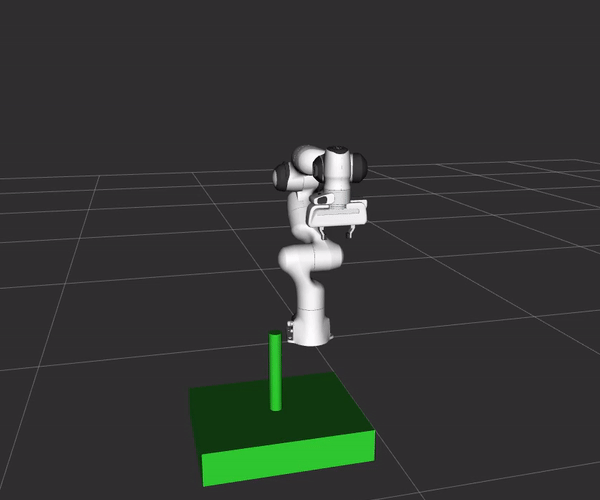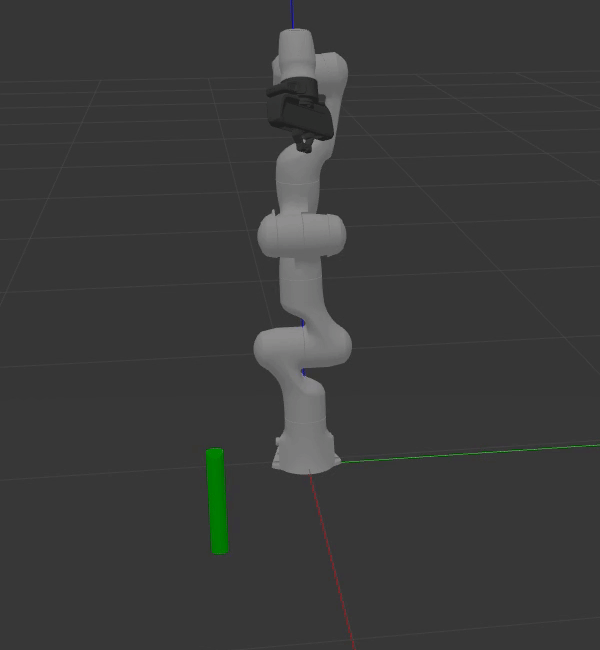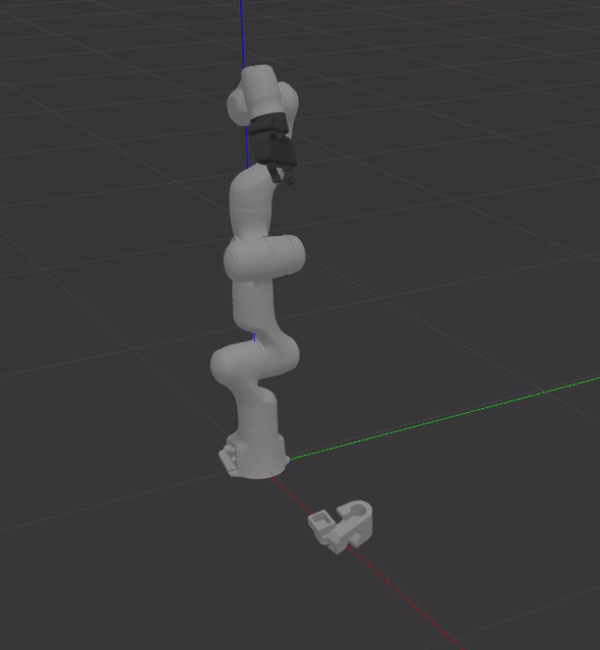Documentation Version
You're reading the documentation for a stable version of MoveIt that is not being developed further. For information on the recommended version, please have a look at Main.
MoveIt Deep Grasps
This tutorial demonstrates how to use Grasp Pose Detection (GPD) and Dex-Net within the MoveIt Task Constructor.
GPD (left) and Dex-Net (right) were used to generate the grasp pose to pick up the cylinder.
Getting Started
If you haven’t already done so, make sure you’ve completed the steps in Getting Started. It is also worthwhile to complete the steps in MoveIt Task Constructor.
There are additional dependencies to install in order to run the demos. Therefore, the deep grasping packages are located in their own repository. Please see Deep Grasp Demo. This repository contains detailed instructions for installation, running the demos, simulating depth sensors, and tips for performance.
The demos will allow you to visualize the results in rviz and use Gazebo if desired.
Conceptual Overview
The MoveIt Task Constructor contains a DeepGraspPose generator stage. This stage does not directly contain
the implementation of either GPD or Dex-Net. Instead, communication with the MoveIt Task Constructor is achieved through
ROS action messages. The DeepGraspPose stage contains an action client that communicates with an action server. The implementation of the action server is in
both the moveit_task_constructor_gpd and moveit_task_constructor_dexnet packages. The action server sends the grasp
candidates along with the associated costs back to the action client as feedback.
The relevant fields for the message can be seen in moveit_task_constructor_msgs/action/SampleGraspPoses.action.
Using the DeepGraspPose stage is easy. Add the stage below to the current task. The implementation can be seen in Deep Grasp Task.
auto stage = std::make_unique<stages::DeepGraspPose<moveit_task_constructor_msgs::SampleGraspPosesAction>>(
action_name, "generate grasp pose");
The template parameter is the action message. Specify the action_name which is the namespace for communication between
the server and the client. Optionally, the timeouts for grasp sampling and server connection can be supplied. By default these are
set to unlimited time.
Grasp Pose Detection
GPD samples grasp candidates from a point cloud and uses a CNN to classify whether the grasp candidate will be successful. The table plane is automatically segmented from the point cloud in the demo. This is useful because GPD will sample grasp candidates around this plane if not removed.
The workspace and num_samples parameters in gpd_config.yaml can improve performance.
The first parameter specifies the volume of a cube to search for grasp candidates centered at the origin of the point cloud frame. The second
specifies the number of samples from the cloud to detect grasp candidates.
Dex-Net
Dex-Net will sample grasp candidates from images. A color and depth image must be supplied. Dex-Net uses a grasp quality convolutional neural network (GQ-CNN) to predict the probability a grasp candidate will be successful. The GQ-CNN was trained on images using a downward facing camera. Therefore, the network is sensitive to the camera view point and will perform best when the camera is facing down.
Set the deterministic parameter to 0 in dex-net_4.0_pj.yaml for nondeterministic grasp sampling.
Running the Demos
The point cloud and images for the demo are provided but you can optionally use sensor data from a simulated depth camera in Gazebo.
Due to the sensitivity of the camera view point, it is recommended to use the images of the cylinder that are provided for the Dex-Net demo.
The Camera View Point section shows how to change the camera to different positions. This will improve performance depending on the object.
The Depth Sensor Data section shows how to collect data using the simulated depth camera.
Fake Controllers
First, launch the basic environment:
roslaunch moveit_task_constructor_demo demo.launch
Next, launch either the GPD or Dex-Net demo:
roslaunch moveit_task_constructor_gpd gpd_demo.launch
roslaunch moveit_task_constructor_dexnet dexnet_demo.launch
The results should appear similar to the two animations at the top of the tutorial.
Gazebo
Make sure you complete the deep grasp demo install guide for Gazebo support.
The load_cloud argument in gpd_demo.launch and the load_images argument in dexnet_demo.launch specifies whether or not to load the sensor data from a file. Set either one of these arguments to false to use the simulated depth camera.
First, launch the Gazebo environment:
roslaunch deep_grasp_task gazebo_pick_place.launch
Next, launch either the GPD or Dex-Net demo:
roslaunch moveit_task_constructor_gpd gpd_demo.launch
roslaunch moveit_task_constructor_dexnet dexnet_demo.launch
The animations below demonstrate the capabilities of Dex-Net for grasp pose generation using the simulated depth camera in Gazebo.
You may notice GPD can successfully pick up the cylinder. However, the algorithm will struggle with more complicated objects
such as the bar clamp (seen on the right). Experiment with the workspace and num_samples parameters to see if you can generate a successful grasp using GPD.



